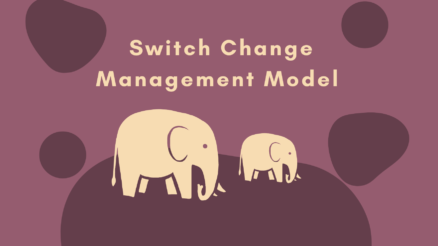Agile organizational structures have been adopted by many organizations in recent years in response to the ever-changing business environment.
The common characteristics of agile organizations are their flat hierarchy, decentralized decision-making, and focus on continuous improvement.
The agile model is based on the belief that employee creativity and collaboration are key to success. This type of company culture often includes features such as open-plan offices, flexible work hours, and remote working.
This type of company culture is often seen in start-ups and tech companies. These agile model has its roots in the software development industry but has since been adopted by businesses in other industries.
In this article, we’ll discuss what is agile organizational structure, tips to making agile structures and challenges and how to overcome these challenges.
Definition of Agile Structure
The structure of an agile organization is designed to support its flexible and adaptable nature. The organization is typically divided into small, autonomous teams that are empowered to make decisions and take action quickly. These teams are often cross-functional, which means they have all the skills and knowledge necessary to complete their work without waiting for approval from other departments.
The agile organizational structure has several benefits. It allows organizations to be more responsive to change, develop new products and services faster, and improve communication and collaboration between employees. Additionally, this type of structure can help to reduce costs by eliminating the need for layers of management.
How to implement agile Structure in your organization
When it comes to organizational structures, there is no one-size-fits-all solution. The most important thing is to find a structure that works for your company and your employees. However, more and more companies are finding that an agile structure can be hugely beneficial.
If you’re thinking of making the switch to an agile structure, here are a few tips to help you make it work for you.
First, it’s important to have a clear understanding of what agile is. There is no single definition of agile, but at its core, it is all about being flexible and adaptable. This means being open to change and willing to experiment. It also means empowering your team members to take ownership of their work and make decisions together.
Second, you need to be clear about why you want to switch to an agile structure. What are your goals? What do you hope to achieve? Once you know this, you can start to create a plan for how to implement agile within your organization.
Third, you must get buy-in from your team members. Agile won’t work if everyone isn’t on board with the change. Talk to your team about why you’re thinking of switching to an agile structure and what it will mean for them. Get their input and feedback on the best way to make it work for everyone.
Finally, remember that changing to an agile structure won’t happen overnight – it’s a process that takes time and patience. Be prepared for bumps in the road and be willing to adjust as you go. With these tips in mind, you can make the transition to an agile organization that works for you and your team.
Different Types of Agile Teams
There are different models to set up agile teams. Organizations usually go for any model depending on their goals, vision, size and financial resources.
Here are a few examples:
Specialist:
In a specialist model, each team member has a deep understanding of a single area or discipline. This can be an efficient way to organized work, as team members can focus on their area of expertise and produce high-quality results. However, this type of structure can also be inflexible, as team members may struggle to switch tasks or take on new responsibilities.
Generalist:
In contrast, a generalist model is typically seen in smaller organizations and is characterized by team members who have a broad understanding of a variety of topics. This agile structure gives organizations the ability to quickly adapt to change and respond to new challenges. While generalists may not have the same depth of knowledge as specialists, they are often better equipped to handle a wider range of tasks. As a result, the generalist model can be a flexible and effective way to organize teams.
Hybrid:
Hybrid teams are a combination of both generalists and specialists. Hybrid teams usually have 1-2 generalists who oversee the entire project, while the rest of the team focuses on specific tasks. There are certain advantages of a hybrid team like improved teamwork, high-quality deliverables, and a greater sense of ownership. Hybrid teams are agile and adaptable, which makes them well suited for fast-paced environments. They also have a clear understanding of their roles and responsibilities, which leads to improved communication and collaboration.
Parallel:
In agile organizations, teams are structured around the principle of parallelism. This means that team members share responsibilities and change tasks with each new project. This approach requires focussed training so that team members can adapt to a variety of roles and responsibilities.
However, it also provides a number of benefits. First, it allows teams to be more flexible and responsive to change. Second, it helps to reduce silos and encourage collaboration. Third, it ensures that team members are always learning and developing new skills. Ultimately, parallelism is an important part of the agile approach and can help organizations to be more successful.
Challenges of Agile Organizational Structure
While agile structures offer many benefits, they also come with a unique set of challenges.
Unclear roles and responsibilities
Agile organizational structures are designed to be flexible and responsive to change. However, one of the challenges of agile structures is that they can often lead to unclear role and responsibilities for employees. This can be particularly problematic in times of change or flux, when agile structures are most likely to be used.
Without clear roles and responsibilities, employees may be unsure of their place within the organization or how their work fits into the larger picture. This can lead to confusion, frustration, and ultimately a loss of productivity. Thus, it is important for organizations using agile structures to clearly define roles and responsibilities at all levels, in order to avoid these problems.
Challenge of collaboration
Many a times it seems difficult to get agile teams to collaborate towards a common goal. Because agile structures are based on small, self-contained teams, each team may have their own priorities and ways of working. As a result, it can be difficult to get them to work together towards a shared goal.
Additionally, agile structures often rely on informal communication channels, such as face-to-face interactions and online chat rooms. These channels can be difficult to navigate and may not be suitable for all team members. As a result, agile structures can present challenges for collaboration.
Unclear chain of command
Without a clear chain of command, decision-making can be difficult and timely decisions can be hard to come by. Due to decentralised in nature, it is always difficult to coordinate activities and ensure that everyone is working towards the same goals.
Challenge of seeing big Picture
Organizational success depends on all employees working together towards a common goal. However, in many agile organizational structure , employees are siloed off into separate departments with little communication between them. This can lead to a loss of sight of the big picture and make it difficult to align individual goals with the organization’s overall mission.
Final Words
The structure of an agile organization is crucial because it should be aligned with required flexibility and adaptability to respond continuous changing business situation. There are certain challenges of agile structures but despite these challenges, agile structures offer many advantages that make them well worth considering for any organization. When used correctly, they can help businesses to achieve their goals more quickly and effectively.



